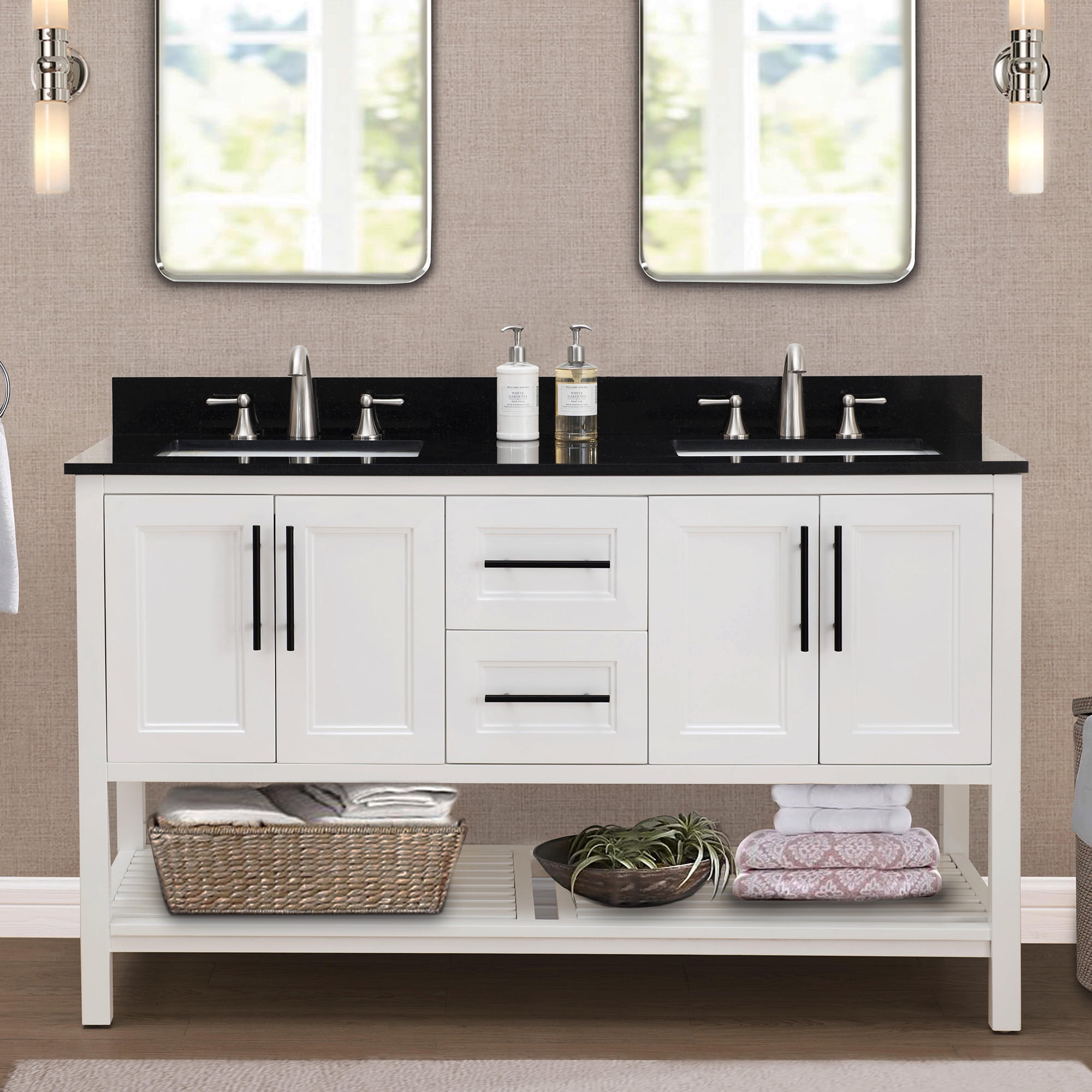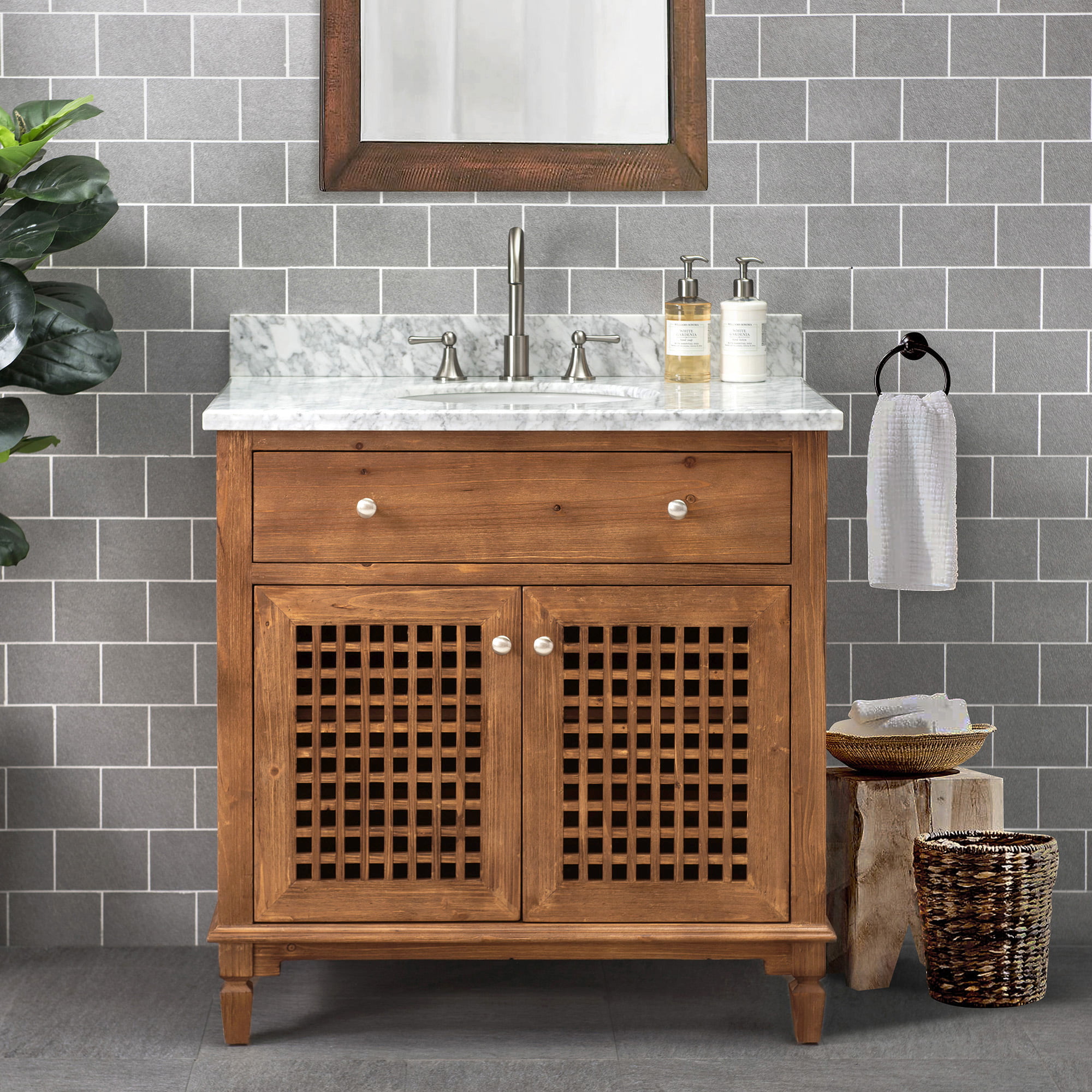Bathroom Vanity Styles: Style Selections Bathroom Vanity

The heart of any bathroom, a bathroom vanity serves both functional and aesthetic purposes. From sleek and modern to rustic and traditional, the style of your vanity can significantly impact the overall look and feel of your space. Choosing the right style is crucial, as it sets the tone for your bathroom decor and complements your personal taste. Let’s delve into the most popular bathroom vanity styles, exploring their unique characteristics, materials, and finishes to help you find the perfect match for your bathroom.
Traditional Bathroom Vanity Styles
Traditional bathroom vanities exude timeless elegance and sophistication. They often feature intricate details, classic lines, and warm, inviting colors.
- Materials: Traditional vanities are typically crafted from solid wood, such as oak, cherry, or mahogany, often with a rich, dark stain or painted finish.
- Features: Key features include ornate carvings, decorative hardware, and pedestal bases or cabinets with raised panels.
- Finishes: Traditional vanities often feature polished nickel or brass hardware, with finishes like oil-rubbed bronze, brushed nickel, or antique brass adding a touch of vintage charm.
A traditional bathroom vanity with intricate carvings, a dark cherry stain, and polished nickel hardware would complement a classic bathroom with clawfoot tub, patterned wallpaper, and antique-style fixtures.
Contemporary Bathroom Vanity Styles
Contemporary bathroom vanities embrace clean lines, minimalist design, and a focus on functionality. They prioritize sleek aesthetics and modern materials.
- Materials: Contemporary vanities are often made from materials like lacquered wood, high-gloss acrylic, or stainless steel, offering a polished and refined look.
- Features: Key features include simple geometric shapes, integrated sinks, and sleek, minimalist hardware.
- Finishes: Contemporary vanities typically feature chrome or brushed nickel hardware, with finishes like matte black or white adding a touch of modern sophistication.
A contemporary bathroom vanity with a sleek, rectangular design, a high-gloss white finish, and chrome hardware would complement a modern bathroom with geometric tiles, minimalist fixtures, and a walk-in shower.
Modern Bathroom Vanity Styles
Modern bathroom vanities share similarities with contemporary styles, but often push the boundaries of design with bold shapes, innovative materials, and cutting-edge technology.
- Materials: Modern vanities are often made from unconventional materials like concrete, glass, or reclaimed wood, creating a unique and industrial aesthetic.
- Features: Key features include bold geometric shapes, floating designs, and integrated lighting.
- Finishes: Modern vanities often feature black or brushed nickel hardware, with finishes like copper or brass adding a touch of industrial chic.
A modern bathroom vanity with a geometric design, a concrete countertop, and black hardware would complement a contemporary bathroom with bold colors, minimalist fixtures, and a walk-in shower.
Farmhouse Bathroom Vanity Styles
Farmhouse bathroom vanities embrace rustic charm and a sense of warmth. They often feature natural materials, distressed finishes, and a focus on functionality.
- Materials: Farmhouse vanities are typically crafted from reclaimed wood, distressed wood, or painted wood, often with a natural or whitewash finish.
- Features: Key features include open shelving, distressed wood finishes, and farmhouse-style sinks.
- Finishes: Farmhouse vanities often feature oil-rubbed bronze or black hardware, with finishes like white or gray adding a touch of rustic charm.
A farmhouse bathroom vanity with a distressed wood finish, open shelving, and oil-rubbed bronze hardware would complement a farmhouse bathroom with shiplap walls, natural textiles, and a clawfoot tub.
Industrial Bathroom Vanity Styles
Industrial bathroom vanities embrace raw materials, exposed elements, and a focus on functionality. They often feature metal accents, reclaimed wood, and a touch of vintage charm.
- Materials: Industrial vanities are often made from metal, such as steel or iron, or reclaimed wood with a raw, unfinished look.
- Features: Key features include exposed pipes, metal accents, and industrial-style lighting.
- Finishes: Industrial vanities often feature black or brushed nickel hardware, with finishes like copper or brass adding a touch of industrial chic.
An industrial bathroom vanity with a metal frame, reclaimed wood countertop, and black hardware would complement an industrial bathroom with exposed brick, concrete floors, and vintage fixtures.
Bathroom Vanity Materials
:max_bytes(150000):strip_icc()/double-vanity-ideas-1-erin-williamson-design-hill-country-lake-house-6857062a43964338b557315bacc7424f.jpg)
Choosing the right materials for your bathroom vanity is crucial, as it impacts both its durability and aesthetic appeal. From classic wood to modern quartz, a variety of materials offer unique characteristics that cater to different preferences and budgets.
Wood
Wood is a popular choice for bathroom vanities due to its natural beauty and versatility.
- Durability: Wood is known for its durability, especially hardwoods like oak, maple, and cherry. However, it’s susceptible to moisture damage, so it’s essential to choose a wood that’s been treated for moisture resistance and seal it with a protective finish.
- Maintenance: Wood vanities require regular cleaning and sealing to prevent moisture damage and maintain their appearance. You’ll need to apply a sealant every few years, depending on the type of wood and finish.
- Aesthetic Appeal: Wood offers a wide range of colors, grains, and finishes, allowing you to create a classic, rustic, or contemporary look. It can be stained, painted, or left natural to complement your bathroom decor.
- Cost: Wood vanities can range in price depending on the type of wood, size, and craftsmanship. Hardwoods are typically more expensive than softwoods.
- Sustainability: Choosing sustainably sourced wood is important. Look for certifications like the Forest Stewardship Council (FSC) to ensure the wood comes from responsibly managed forests.
Marble
Marble is a luxurious and elegant material often used for bathroom vanities.
- Durability: Marble is a durable material, but it’s susceptible to scratches and etching from acidic substances like lemon juice or vinegar. It’s also porous, so it can absorb stains if not properly sealed.
- Maintenance: Marble requires regular cleaning and sealing to protect it from stains and etching. It’s also important to use a pH-neutral cleaner and avoid abrasive cleaners.
- Aesthetic Appeal: Marble is known for its elegant veining and natural beauty. It comes in a wide range of colors and patterns, adding a touch of sophistication to any bathroom.
- Cost: Marble vanities are generally more expensive than wood vanities, especially for high-quality marble. The cost can vary depending on the type of marble and its origin.
- Sustainability: Marble is a natural stone, so its sustainability depends on the quarrying practices. Look for marble sourced from environmentally responsible quarries.
Granite
Granite is another natural stone often used for bathroom vanities, known for its durability and beauty.
- Durability: Granite is a very durable material, resistant to scratches, heat, and stains. It’s also non-porous, making it less susceptible to moisture damage than marble.
- Maintenance: Granite requires minimal maintenance, primarily regular cleaning with a mild cleaner. It’s important to avoid abrasive cleaners that can scratch the surface.
- Aesthetic Appeal: Granite comes in a wide range of colors and patterns, offering a unique and natural look. It can be polished, honed, or left with a textured finish to create different aesthetics.
- Cost: Granite vanities are generally more expensive than wood vanities but less expensive than marble vanities. The cost varies depending on the type of granite and its origin.
- Sustainability: Like marble, granite’s sustainability depends on the quarrying practices. Look for granite sourced from environmentally responsible quarries.
Quartz
Quartz is an engineered stone made from crushed quartz crystals mixed with resin and pigments.
- Durability: Quartz is incredibly durable, resistant to scratches, heat, stains, and bacteria. It’s also non-porous, making it a low-maintenance option for bathrooms.
- Maintenance: Quartz requires minimal maintenance, simply regular cleaning with a mild cleaner. It’s a good choice for busy households as it’s easy to clean and maintain.
- Aesthetic Appeal: Quartz offers a wide range of colors, patterns, and textures, mimicking the look of natural stone. It’s also available in solid colors, allowing for a modern and sleek aesthetic.
- Cost: Quartz vanities are generally more expensive than wood vanities but less expensive than natural stone vanities like marble and granite.
- Sustainability: Quartz is a manufactured material, so its sustainability depends on the manufacturing process. Look for quartz made with recycled materials and responsible manufacturing practices.
Laminate
Laminate is a budget-friendly material that offers a durable and versatile option for bathroom vanities.
- Durability: Laminate is a durable material that’s resistant to scratches, heat, and moisture. It’s also easy to clean and maintain.
- Maintenance: Laminate requires minimal maintenance, simply regular cleaning with a mild cleaner. It’s a good choice for busy households as it’s easy to clean and maintain.
- Aesthetic Appeal: Laminate offers a wide range of colors, patterns, and textures, mimicking the look of natural stone, wood, or other materials. It’s also available in solid colors, allowing for a modern and sleek aesthetic.
- Cost: Laminate vanities are the most affordable option, making them a popular choice for budget-conscious homeowners.
- Sustainability: Laminate is a manufactured material, so its sustainability depends on the manufacturing process. Look for laminate made with recycled materials and responsible manufacturing practices.
Bathroom Vanity Features

A bathroom vanity is more than just a place to wash your hands; it’s a central element that significantly influences both the functionality and aesthetic appeal of your bathroom. Choosing the right vanity features can transform your bathroom into a haven of convenience and style.
Storage Options
Storage options are crucial for maintaining an organized and clutter-free bathroom. Here’s a breakdown of different storage solutions:
- Drawers: Drawers provide ample space for storing toiletries, towels, and other bathroom essentials. They offer a more organized and accessible way to store items compared to open shelves.
- Cabinets: Cabinets offer concealed storage, keeping items out of sight while providing ample space for larger items like hairdryers or styling tools.
- Open Shelves: Open shelves offer a more visually appealing way to display decorative items or frequently used items like hand towels. However, they can be prone to dust accumulation.
- Medicine Cabinets: Medicine cabinets are a practical and space-saving option for storing medications, first-aid supplies, and other small items. They can be integrated into the vanity mirror or mounted separately.
Sink Types
Sink types play a significant role in the functionality and aesthetic appeal of a bathroom vanity.
- Undermount Sinks: Undermount sinks are seamlessly integrated into the countertop, creating a sleek and modern look. They are easy to clean and offer a larger workspace.
- Vessel Sinks: Vessel sinks are stylish and contemporary, sitting atop the countertop. They offer a unique visual appeal but can be less practical for everyday use due to their smaller size and limited counter space.
- Drop-in Sinks: Drop-in sinks are a classic and affordable option. They are installed directly into the countertop, offering a simple and practical solution.
Countertop Materials, Style selections bathroom vanity
Countertop materials are an essential aspect of bathroom vanity design, influencing both functionality and aesthetics.
| Material | Benefits | Examples |
|---|---|---|
| Granite | Durable, scratch-resistant, heat-resistant, natural beauty | Traditional bathroom vanities with granite countertops often feature intricate carvings and decorative elements. |
| Marble | Elegant, timeless, unique veining patterns | Marble countertops are often found in luxurious bathrooms, adding a touch of sophistication and elegance. |
| Quartz | Non-porous, stain-resistant, low maintenance | Quartz countertops are a popular choice for modern bathroom vanities, offering a sleek and contemporary look. |
| Laminate | Affordable, wide range of styles and colors | Laminate countertops are a budget-friendly option, offering a variety of designs and patterns to suit different bathroom styles. |
Lighting Fixtures
Lighting plays a crucial role in enhancing the functionality and ambiance of a bathroom.
- Vanity Lights: Vanity lights illuminate the sink area, providing adequate light for grooming and makeup application. They come in various styles and finishes to complement the bathroom decor.
- Ambient Lighting: Ambient lighting provides overall illumination for the bathroom, creating a relaxing and inviting atmosphere. Recessed lighting or ceiling fixtures are common choices.
- Accent Lighting: Accent lighting adds visual interest and highlights specific features, such as artwork or decorative elements. Sconces or track lighting are popular options for accent lighting.